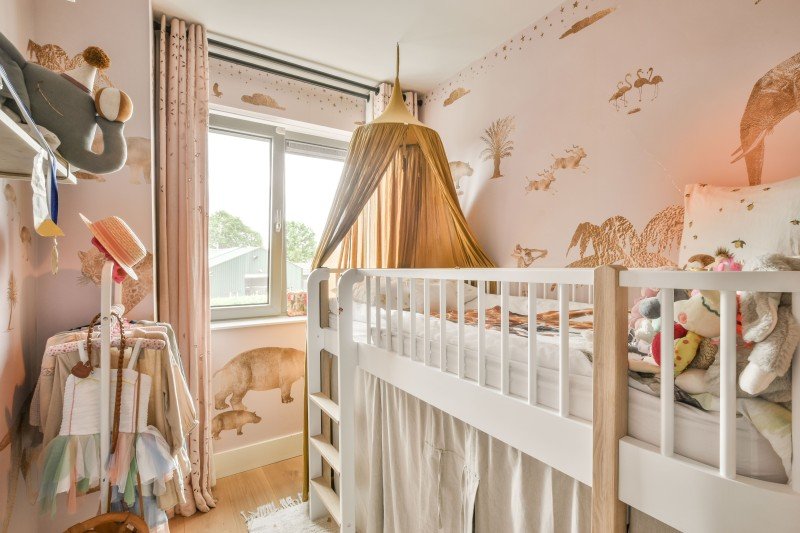A Comprehensive Guide to Children's Bunk Beds: Styles, Benefits, and Safety Considerations
Bunk beds have become a popular option for households wanting to take full advantage of space and offer a fun sleeping environment for kids. With their unique design, they offer a creative and useful service for shared bedrooms, playrooms, or even guest accommodation. This article explores the various designs of kids's bunk beds, their benefits, safety considerations, and answers some often asked questions.
The Allure of Bunk Beds
Children's bunk beds are more than just space-saving structures; they are likewise a gateway to daring dreams and imaginative play. Below is a comprehensive examination of their various benefits.
Benefits of Bunk Beds
- Space-Saving: Bunk beds effectively utilize vertical space, making them an ideal option for smaller sized spaces.
- Playful Design: Many bunk bed styles consist of slides, camping tents, and themed aspects, stimulating creativity and excitement.
- Partner Sharing: Bunk beds are best for siblings sharing a room or accommodating pajama parties.
- Flexible Use: Some designs can be separated into 2 specific beds, using flexibility as children grow.
- Storage Options: Many bunk beds include built-in drawer storage or shelves, further enhancing their functionality.
Designs of Children's Bunk Beds
The variety of bunk beds offered today caters to various choices and requirements. Below is a summary of some popular styles.
| Design | Description | Best For |
|---|---|---|
| Requirement Bunk Bed | A conventional design including one bed stacked above another. | Brother or sisters sharing a space. |
| Loft Bed | Similar to a bunk bed without the bottom bunk, permits for an office or play area listed below. | Minimal space for play/desk. |
| L-Shaped Bunk Bed | 2 beds set up in an L-shape, typically with extra sections for storage or play. | Distinct space layouts. |
| Twin Over Full | A twin bed over a complete bed, accommodating various sleep needs. | Growing children and teens. |
| High Sleeper | Stands even higher than a loft bed, usually featuring a desk or play area listed below. | Older kids requiring more play/desk space. |
| Camping Tent Bunk Bed | Bunk beds with a canopy or tent-like structure, producing a comfortable, enjoyable space. | Active and creative kids. |
Secret Features to Consider
When selecting the right bunk bed for kids, the following features are worth thinking about:
- Material: Bunk beds can be made from wood, metal, or a mix. Each has its special visual and sturdiness.
- Weight Capacity: Always confirm the weight limitation of the bunk bed to guarantee it can accommodate your kids securely.
- Safety Rails: Ensure the top bunk has strong rails to avoid falls.
- Ladder Security: A well-designed ladder ought to provide easy and safe access to the upper bunk.
- Ending up: Ensure any surfaces are non-toxic and safe for children.
Security Considerations
Security is vital when it pertains to kids's bunk beds. The following standards must be stuck to:
- Age Appropriateness: Generally, children under 6 years of ages must not oversleep the upper bunk due to safety risks.
- Strong Construction: Ensure the frame and materials are solid and can support the weight without sagging.
- Routine Maintenance: Periodically look for loose screws, bolts, or other parts that might need tightening.
- Clear Play Area: Keep the location around the bunk bed devoid of toys and challenges to minimize tripping dangers.
Setting Rules for Safe Use
Developing guidelines for bunk bed use will help make sure security:
- Limit Jumping and Climbing: Children must be encouraged against jumping from the leading bunk and getting on the sides.
- Monitoring Sleepovers: Monitor young guests while they are utilizing the bunk bed for the very first time.
- Inform on Ladder Use: Teach how to utilize the ladder safely, highlighting the importance of dealing with the ladder when going up or down.
Regularly Asked Questions
1. What age is proper for a child to oversleep the top bunk?
Most producers advise that kids must be at least six years old to oversleep the upper bunk. This standard is created to mitigate the risk of falls.
2. Can bunk beds be personalized?
Yes, many manufacturers provide adjustable alternatives, consisting of colors, products, and extra features like drawers or desks.
3. Are bunk beds safe for weight?
Bunk beds have weight limits, typically varying from 200 to 400 pounds, depending on the model and material. Constantly check Bunk Beds For Kids .
4. How do I keep and clean up a bunk bed?
Routinely examine for loose parts, keep the bed clean by cleaning down surface areas, and guarantee the bed linen is fresh to promote a safe and sanitary sleep environment.
5. Can bunk beds be separated into specific beds?
Lots of bunk beds feature an alternative to separate them into 2 private beds, providing long-lasting adaptability.
Kid's bunk beds are more than mere furniture; they are a practical, versatile, and imaginative part of a kid's space. With numerous designs available and many safety considerations to bear in mind, moms and dads can choose the best bed that fits their space, fulfills their kids's needs, and imparts a sense of adventure. By understanding the benefits, styles, and security measures connected with bunk beds, households can develop a delightful and protected sleeping environment for their kids. Whether for siblings sharing a space or space-saving services, bunk beds remain a cherished choice for many homes.

